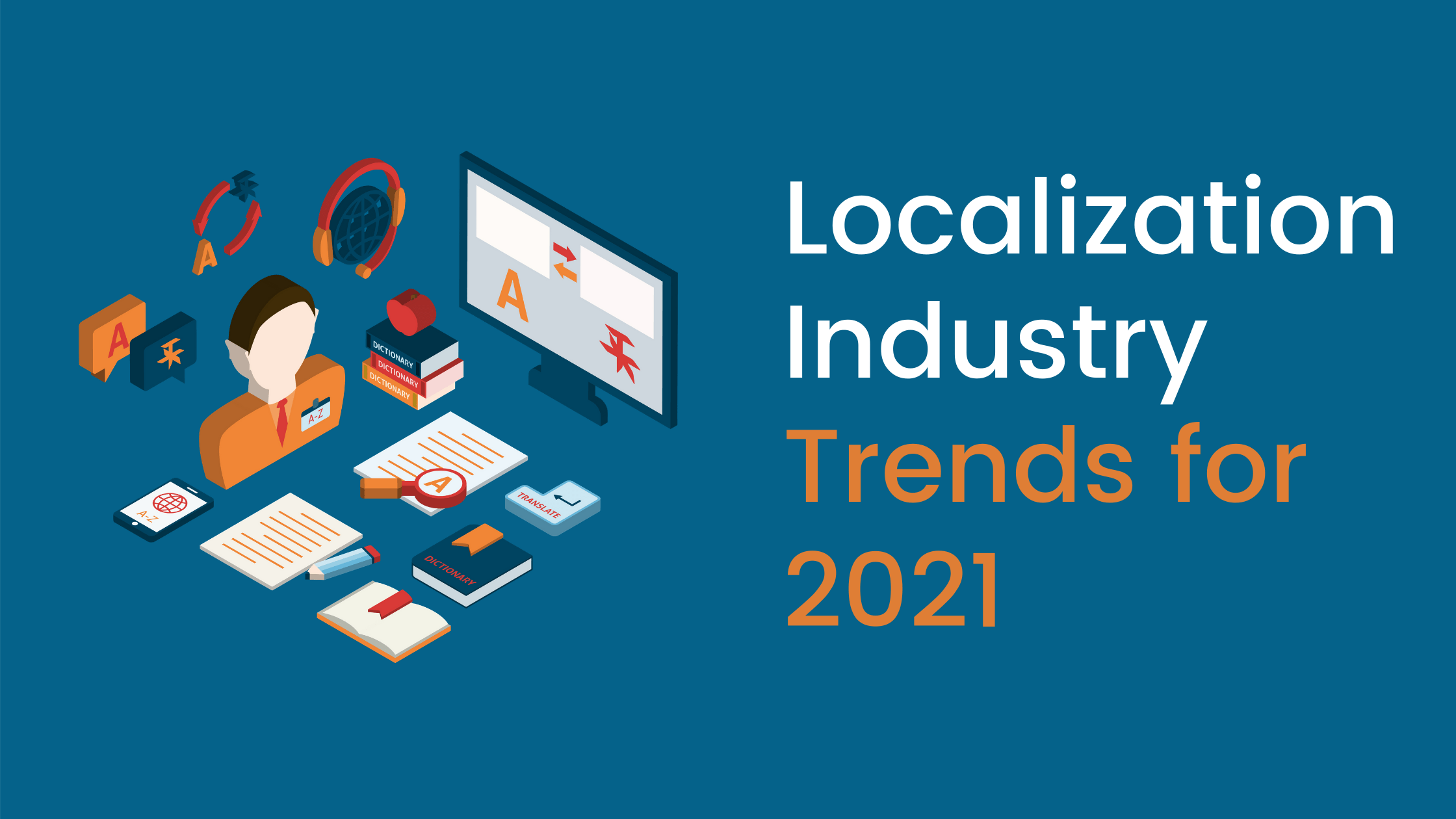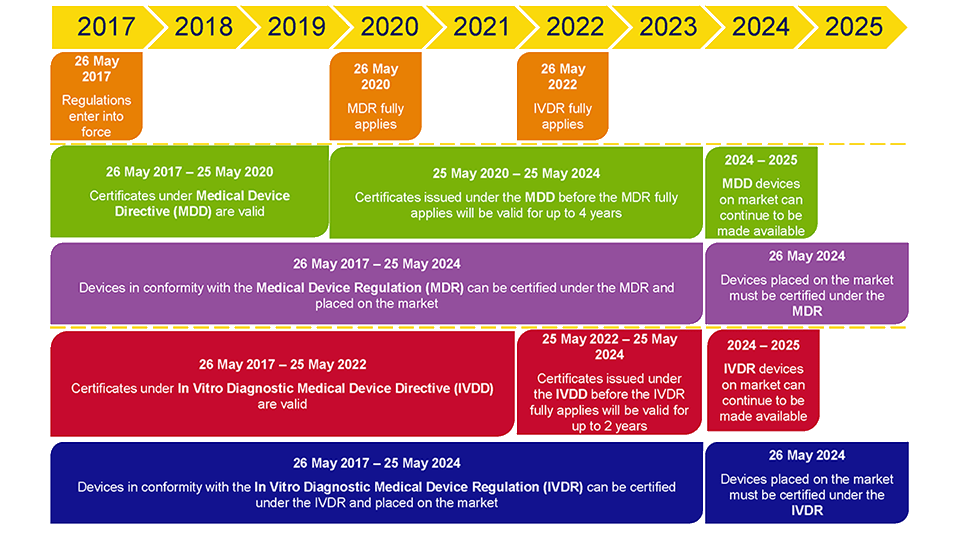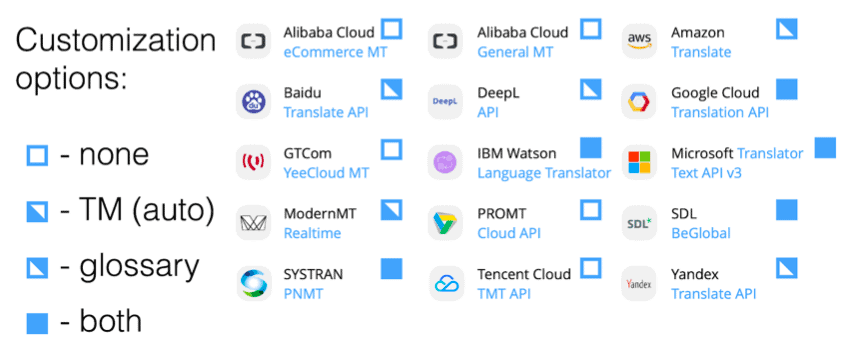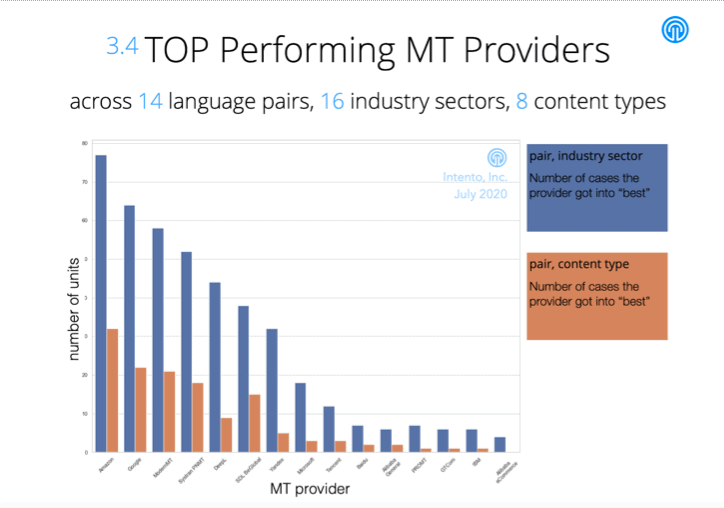Designed by Macrovector / Freepik
In late 2019, when we were writing the article for the top localization trends for 2020, we did not anticipate an unusual year.
Come to think of it, none of us could have predicted just how different 2020 would turn out. COVID-19 being the centre of attention to changing the world. With 2020 coming to an end, we can start to turn our attention to the onrushing 2021. COVID is still here, and a lot of the changes it has forced us to make will be permanent.
We, however, are not going to write a 9-minute-read article about the pandemic and how it affected us. Nor what the future holds for us post Covide era. Our Head of Marketing, Elad Plotnik, talked to Konstantin Dranch, a market researcher specializing in language technology, and Diego Cresceri, CEO & Founder of Creative Words. They discussed the past year and what are the top localization trends of 2021. We hope this will give you a head-start over your competition. Take these localization trends and consider them when outlining your localization and or marketing strategy for the new year. So before diving into next year, here is a summary of the year most of us will probably want to forget.
What Did 2020 Teach Us?
When looking forward, it’s important to keep an eye on the past. With that said, what better place to start than with a summary of 2020 before we leave it behind!
Translation Management Systems are a hot ticket for investment. Growth in leading TMS companies is up 30%. In a post covid marketplace when initial lockdowns ended in July, the need for translation services increased markedly.
“In the space of less than 3 months, private equity giant Carlyle bought a majority stake in Memsource, RSI platform Kudo raised USD 6m, and MT curator Intento USD 3m. Now comes Latvia-based Lokalise. The SaaS startup has raised USD 6m in a Series A round.”
– Florian Faes, Slator, M&A and Funding.
-
- Video translation continues its meteoric rise amongst translation services. With the pandemic driving an already occurring trend and accelerating it exponentially. By 2021, 80% of the world’s internet traffic will be video. Whether it’s translated closed captions for the 85% of Facebook users watching their videos muted. Or a localized voiceover to efficiently and cost-effectively give your production international reach, video is no longer a luxury.
- GPT3 is a potential gamechanger, just not quite yet. Created by OpenAI, GPT3 is described as the most important and useful advance in AI for years. A huge advancement in Natural Language Processing, it has performed formidably in translation tasks set to it in open beta. Although cost and speed are still currently major hurdles, even the co-founder isn’t getting carried away with the hype.
The GPT-3 hype is way too much. It’s impressive (thanks for the nice compliments!) but it still has serious weaknesses and sometimes makes very silly mistakes. AI is going to change the world, but GPT-3 is just a very early glimpse. We have a lot still to figure out.
– Sam Altman (@sama)July 19, 2020
- The market for ‘connectors’ is growing. With providers like BeLazy filling the gaps and offering middleware solutions to streamline the localization process. Smaller LSPs are adopting this technology to augment their existing supply chain. Saving on typical project management time and costs associated with small, repetitive translation jobs. These jobs are often the meat and veg of smaller TMSs, enabling them to increase productivity and therefore revenue.
- In-context translation in the design phase is adding another dimension. The in situ control available (like our Figma plugin provides!) is transforming workflows. Being able to translate and localize while still in the design phase is a massive boon for designers. With different languages requiring different amounts of space and layouts, these can all be tested before publication. Meaning multilingual outcomes can be expedited from the get-go saving time and money.
Top Localization Trends For 2021
It’s about time, you are thinking, that we reach our look ahead for 2021! So just what can we expect from the localization trends for the upcoming year? There will certainly be some carry over from the trends we originally outlined for 2020 as they remain pertinent!
#1. eCommerce Localization
Website and e-commerce localization is currently a hot webinar and event topic. With a lot of e-commerce considering investing in localization but perhaps still needing a push to understand the value. TMSs already geared towards localization of e-commerce content will have a headstart in the sector. The pandemic has had a profound effect on this too with e-commerce rocketing due to lockdown restrictions.
“Cross-border e-commerce sales expected to rise an average of 63% YoY across the festive season.”
– EShopWorld
A trend we can expect to continue as pandemic created paradigm shifts create new rules of engagement.
#2. E-learning Translation
A classroom without borders. This is another market segment that was already experiencing solid growth before the current pandemic. With most activities now beginning in the home for the foreseeable, e-learning is surging. It’s also a hotbed of cutting-edge technology and creative innovative trends. With that said, providers can’t ignore the fact that their learners are international. E-Learning documents, course material, brochures all need to be provided in a multitude of languages to capture the market segment.
Retraining is a real prospect for millions of people globally. With mass unemployment and transitions to meet the new demands of a post-Covid world, the vast uptake in e-learning continues. Many companies have moved to remote-first operations, realizing that stay at home orders drastically cut overheads without productivity detriment.
“50% of all employees will need reskilling by 2025, as adoption of technology increases, according to the World Economic Forum’s Future of Jobs Report.”
– WEF
#3. Transcreation
Transcreation is here to stay. When localization is poorly done it can be more detrimental than if you hadn’t bothered. With transcreation, content is translated and localized in a way that it appears it was created in the target language. As globalization continues, companies need a way to authentically engage with their international target markets. Transcreation allows existing marketing material to be adapted and freshly spun into suitable content for global audiences.
Transcreation has been described as ‘localization on steroids’. In theory, you are seeking the same outcome; adapting your content to a local target market. Nevertheless, as we’ve discussed before, transcreation can make a global marketing strategy locally significant.
To successfully transcreate a message, it must elicit the same emotional response in the target language as it did in that of the source language.
“Life has moved online, and companies doubled down on digital advertising to cover the gaps left by all these canceled conferences. If a better copy can improve conversions, then it makes sense to invest in copy in all company’s languages. That line of thinking led to more transcreation in 2020 and will continue to develop this service in 2021. Transcreation, as opposed to marketing translation, is very low-tech. A Google Doc is still the main tool, because what can be better for creativity than a white sheet of paper? Software companies are attacking this space, however, and we will see launches of AI-powered transcreation workbenches that help writers find just the right words — at scale.”
– Konstantin Dranch
#4. Medical Translation
Well it is no surprise that medical translation will appear on our list, right? The EU-MDR regulations require translated descriptions and specifications of the device. Also, its verification and validation, and must include references to previous and similar generations on the device. While individual states previously chose their selection of languages, the new EU MDR stipulates that medical device content must be available in all 24 official EU languages. Therefore, if you currently only translate into a fraction of these, you will now be required to increase this to meet the needs of all 24 EU amber languages.
“This is set to be the big translation topic for 2021. Alongside a huge increase in the MedTech sector, the new EU Medical Device Regulation is requiring companies to localize into more languages. Until now, they required translation into 5 main languages but the new regulation requires translation for any market exported to.”
– Diego Cresceri
#5. Representation
“The industry is getting bigger with new audiences and new voices. More millennials are entering the marketplace and the role of LPMs (Localization Project Managers) is changing. A new generation of managers and decision-makers is emerging, with more women in top jobs of localization agencies and companies.”
– Konstantin Dranch
Localization is only truly accurate if it reflects all of the voices that make up a particular locale. Translation and localization famously have a more appropriate gender ratio than a lot of industries. The burgeoning gaming localization scene showcases an almost 50% gender split of men and women in the role (almost).
The same is true of ethnic groups given the nature of the job. But as Anna N. Schlegel pointed out at the recent TAUS “Reinventing the Translation Industry” online event:
“Where are these women that file patents and develop new approaches to globalization? Women establishing companies that are AI-driven can step in and change it all.”
Bonus Content: Machine Translation
With 2021 on the horizon, there is a standout performer that went from strength to strength in 2020. Machine translation is rapidly changing the industry, and we would be remiss not to give it proper consideration here. Let us take a deeper look at MT and how TMSs are integrating it as an essential service in their offerings.
Machine translation usage is increasing as its quality is improving. Improved prediction and customization are rendering it a powerful tool, utilizing it effectively has become key to TMSs offering. Bespoke technology and SaaS are seeing AI translation applied to a customer’s needs. The more they use it, the more efficient it becomes, leaving human translators to focus on editing the content. An intricate waltz between machine and man, AI handles the leg work while translators finesse the content and localize it.
“Predictability and customization of MT are driving industry change. Smaller companies have access to the data of hundreds of different marketplaces. To make use of it and thrive, smaller companies will offer MT as a service.”
– Diego Cresceri
The advent of Neural Machine Translation (NMT) has altered the landscape of translation for both the monolithic and minnows alike.
The faster speeds and lower costs associated with MT (even including the human review element) will increase competition. TMSs no longer have the option of ignoring Machine Translation integration. However, if they do, they face being swallowed up. How they augment it into their existing process will define how well they function in the market in 2021.
Machine Translation is Leading the Pack
The benefits inherent in MT in terms of workflow mean it should be deployed as the first step in your TMS. The customization capabilities of MT make TMS specialization less of a necessity, especially when combined with other CAT Tools. Machine Translation alongside Terminology Management and Translation Memory increase the speed, accuracy, and consistency of your early-stage projects.
Allowing it to handle the grunt work of mass translation frees up your human translators to focus on localization. Smaller companies can adapt to market changes faster, and with MT in their arsenal, this is increased exponentially. Enabling smaller companies to take on jobs that before now would have been far beyond their reach.
Choosing which Machine Translation provider to leverage for your services is becoming a more difficult decision. The existing players are improving as new ones are continuing to join the game.
Consider the language requirements both source and target that your clients are most likely to require will presumably affect your choices. Further still, depending on your CAT Tool suite will inform if you need a Machine Translation provider with customization available.
Speaking of new players, Facebook AI entered the marketplace with its M2M-100. ‘The first multilingual machine translation (MMT) model that can translate between any pair of 100 languages without relying on English data’.
“M2M-100 is trained on a total of 2,200 language directions — or 10x more than previous best, English-centric multilingual models. Deploying M2M-100 will improve the quality of translations for billions of people, especially those that speak low-resource languages.”
– Angela Fan, Facebook AI
This year will indicate just how powerful the new machine translation from Facebook AI truly is.
Rating the Results
Evaluating the capability of a Machine Translation Engine can bring up a plethora of metrics and methods. Fortunately for us, Intento, in partnership with TAUS, recently released their annual ‘independent multi-domain evaluation of commercial machine translation engines’.
It uses the BERTscore (which is horrendously complex) but, currently, provides the generally accepted best metric for evaluating different language generation tasks.
Putting the top 15 Machine Translation providers through their paces, the 41-page report makes for interesting reading. The main visualization we will take away for our brief insight, however, is the below:
While the top performers are expected, two key takeaways from the report are indicative of the industry as a whole.
There you have it: an overview of the localization industry in 2020, what trends are expected to be in 2021, and bonus material about Machine Translation.
This article was written with the contribution of:
Diego Cresceri: CEO & Founder of Creative Words, a Language Service Provider based in Genoa. He is currently a member of the Board of Directors of ELIA, the European Language Industry Association. At Creative Words, he is responsible for the company’s strategy and growth. With a strong inclination to share, when not involved in his company he holds workshops and seminars on innovation, artificial intelligence, and machine translation at universities, training schools, and language associations nationally and internationally.
Konstantin Dranch: a market researcher, influencer, data geek, and entrepreneur specializing in language technology. He created the Language Technology Map used by industry professionals around the world, two industry conferences, as well as translation company rankings and regional market reports in the US, Germany, France, Russia, and other countries. The most recent project by Konstantin is Custom.MT, a specialist company that trains and implements machine translation systems and teams.







